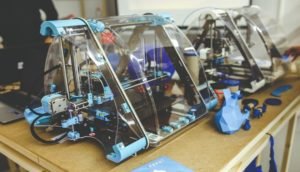Science has played a very important role in simplifying the way humans conduct business on the planet. Robots are one among the many inventions that have completely redefined the way industries operate and the way work is being done. While there are a host of advantages related to robots, there are some disadvantages that these robots bring with them.
Pros:
1. They are fast: Robots are designed to work in a fast-paced environment. They are usually very fast and very effective and can easily perform routine work at very high speeds. This is contrary to what humans are capable of doing.
2. They can access inaccessible places: Robots are designed to be used by people to do various jobs. As such, they can easily reach and access places that humans may not be able to access.
3. They are independent: Robots do not require human intervention to work or operate. Once they have been powered and instructed to work, they will work until instructed otherwise. This makes them quite independent.
4. They are accurate: Robots are designed to be perfect in their operations. This is mainly because each robot is designed to work in a specific section of a production chain. They are therefore accurate and will perform the same task accurately until otherwise.
5. They are enduring: Robots can work on a particular task for a very long time without complaining. They can perform the same task for several years if they are not subjected to breakdowns.
6. They can be used repetitively: Robots do not get tired of doing what they are supposed to do. They can perform the same task repetitively for a very long time until the day they break down or they seize to function.
7. They do not need breaks: Robots use power and gasoline in some cases to perform their duties. This means that as long as there is the power to power the robot, they do not require any breaks in between jobs.
8. They can operate in harsh conditions effectively: Robots do not know the difference between harsh conditions and conducive conditions. Wherever they are placed, they will work effectively as they are meant to do.
9. They can do what people are unwilling to do: Robots are a sure way of getting anything done. They are designed to receive instructions and to execute these instructions. They can therefore be used to do what humans are unwilling to do.
10. Save time: Robots play an important part in saving time by doing a given task within a stipulated time.
Cons:
1. Robots need the power to work: Unlike humans, robots require the presence of power to function. In the absence of power, however effective the robot is, it will not work as planned.
2. Robots create unemployment: Robots are increasingly taking up functions that were meant to be performed by humans. This is happening across all industries and this will eventually lead to unemployment.
3. Robots are expensive to maintain: Robots require full-time power availability and maintenance. Every time a robot breaks down, it requires money to maintain it. This may sometimes be very costly.
4. Robots cannot solve a crisis: Robots operate only when given specific instructions. Once the instructions have been provided, the robots will work. However, they cannot think on their own and therefore are not equipped to solve a crisis in case any occurs.
5. Robots are unintelligent: Robots, unlike humans, are not intelligent. They are not able to think on their own and provide solutions to problems at any given time.
6. Robots have limited functionality: Robots, unlike humans, have very limited functionalities. They are designed to perform specific jobs at a specific time and once these jobs are done, they are not able to do anything else.
7. Robots have no emotions: Robots are not humans and therefore do not have any emotions to deal with problems and crises. They will therefore solve a problem as presented to them and wait for the next problem.
8. Robots can be dangerous: Robots can sometimes be very dangerous if not controlled. Because of their unintelligent nature, they may course harm to humans unknowingly.
9. Robots need instructions to function: Robots cannot function unless they have been instructed to. They are incapable of thinking on their own and acting accordingly.
10. Robots do not know when to stop: Robots are designed to follow instructions to the letter. This means that they need to be told when to start and when to stop. Without these commands, they will just go on and on.



